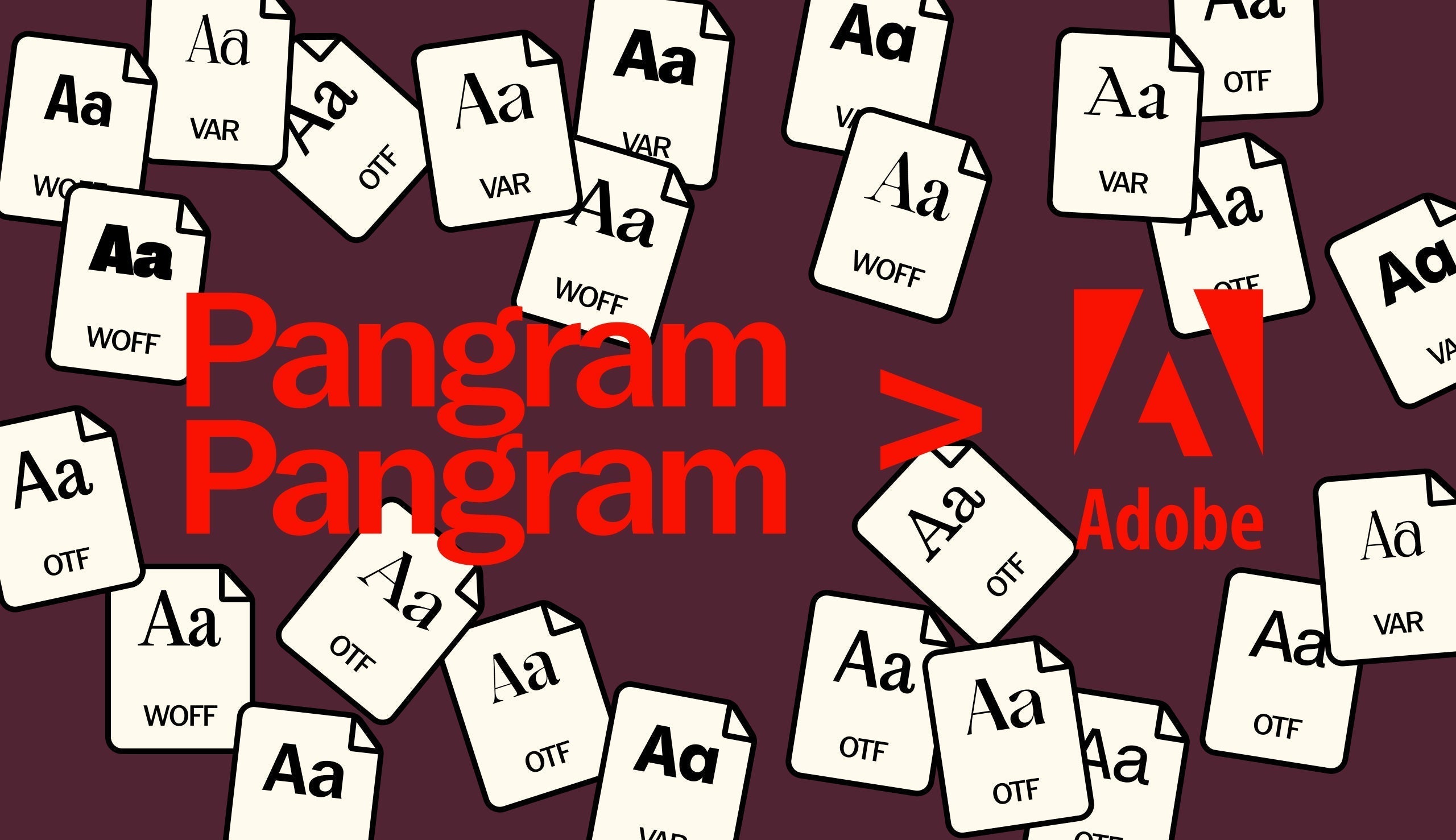He’s only gone and done it again!
Following years of researching, designing, crafting and making, PP Nikkei is out – the latest from typographic mastermind Caio Kondo. More than it says on the tin, Nikkei is not a single font (or a single family), but a super collection of FOUR families, all stemming from the same core concept, rooted in Caio’s Japanese heritage. Maru, Journal, Pacific and Line, Nikkei has a lot to say over its quad squad of subfamilies, each with 18 styles including Italics and a crest set (more on that later…), so we thought there was no better person to chat us through it than the designer himself. Let’s go.
Now that the full family (families!) is out, how do you feel?
I feel extremely happy and relieved, it’s almost comical. It was months dedicated to the development of every curve and every space of Nikkei, to the point that neither I nor my friends can hear the word nikkei without reacting – so much so that it has become a sort of worn-out word. The pride I feel for what I have achieved is immense; it’s not even necessary to express how special it is to me and the significant value it carries. However, after years of dedication, the possibility of starting new projects fills me with enthusiasm.





How did the whole project come about, and how come you didn’t stop at just one family?
Nikkei was born in 2020, it was that typical spark of creativity that ignites at an unexpected moment. After finishing my degree, I dived enthusiastically into typography, and at the same time, my fascination with my Japanese roots was growing. I can say that Nikkei is the result of this confluence of interests.
On this journey, Lais Ikoma and Satsuki Arakaki embraced my idea, and together, we set off on this venture. Originally, the project resulted in just one type weight, and grew into an in-depth study of Japanese immigration to the Americas. You can access it here. Years later, Mat Desjardins showed interest in launching Nikkei at Pangram Pangram.
That’s when I realised I needed to breathe new life into Nikkei, starting from scratch. With more typographic design experience, I knew there was plenty of room for improvements. The opportunity to relaunch motivated me to finally explore additional families, inspired by the historical findings of our research. Soon, the initial concept of a single family seemed small compared to the unfolding potential.



It’s such a big typeface with so many families involved, how would you describe each family in a sentence?
On the American Continent, Nikkei took over small businesses, such as shops, restaurants, small hotels, guest houses, barbershops and laundries. These enterprises not only served as support pillars for the Japanese immigrant community but also laid the groundwork for the development of the most influential typographic style of the Nikkei collection.

Newspapers played a crucial role in preserving Japanese culture among immigrants abroad, representing one of the first significant cultural expressions in the new territories. Inspired by the geometric letters found in these periodicals, the Nikkei Journal reflects the historical importance and cultural richness of these communities, perpetuating their traditions and stories through typography.

The intercontinental crossing of the Pacific was a crucial process for the immigrants, inspired by a typographic variation in the paintings on the ships’ hulls. This subfamily symbolises the importance of this journey.

Ships, historical landmarks of this journey, showed through photos from a historical archive a uniform typographic system in the letters painted on their hulls. A notable feature was the reverse contrast, and the common use of the “Line” suffix in names, such as “Toho Line” and “Japan Line.”

Based on a book about Japanese family crests, we selected those that resonated best with the Nikkei vibe to be used as graphic composition elements. Each letter of the keyboard was associated with one of these crests, allowing their visual representation through the QWERTY layout.
Is Nikkei done, or do you think there is another family or two yet to come?
I haven’t yet stopped to think about it; right now, I’m just savouring the novelty of new projects. But there’s a rich soil for new type families; the historical materials are truthful, there are many more styles waiting to be explored. I’ll let time answer that question.





And, lastly, what’s your favourite glyph from each family?
For me, the letter “a” carries the personality of typographic families; in this letter, it’s possible to see different characteristics between systems. For these and other reasons, this is my favourite glyph in all families!










